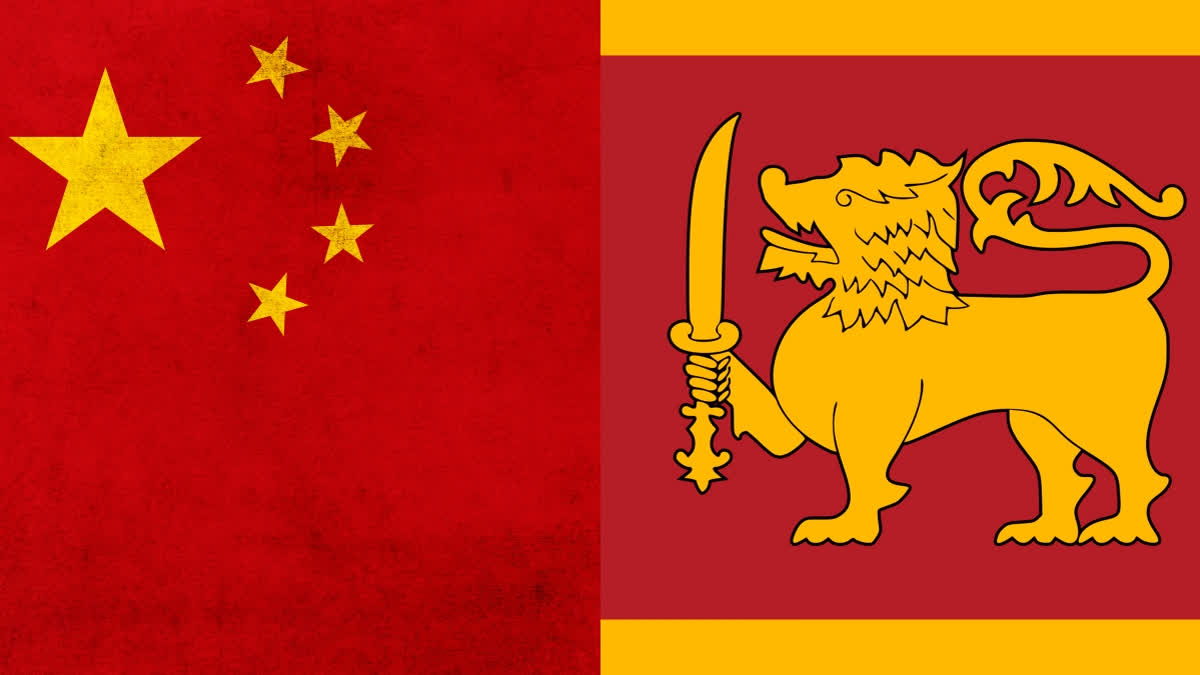New Delhi: In November last year, the Sri Lankan government gave approval to the China Petroleum and Chemical Corporation or Sinopec, the world's biggest oil refiner, to build a $4.5-billion refinery in the Indian Ocean island nation. The project will be located close to the Hambantota port, a port that has already been given on a 99-year lease by Sri Lanka to China due to debt liabilities under Chinese President Xi Jinping's pet Belt and Road Initiative (BRI).
According to media reports, Sinopec is close to finish the feasibility study for the project in June this year. The Reuters news agency quoted industry sources as saying that Sinopec is now contemplating whether to build a 160,000 barrels per day (bpd) refinery or two 100,000-bpd refineries in Sri Lanka. As of now, the island nation has a single refinery built with Iran's aid in the 1960s with a capacity of 30,000 bpd.
With China planning to build an oil refinery in India's backyard, should it be a cause of concern for New Delhi? According to Smruti Pattanaik, Research Fellow in the Manohar Parrikar Institute of Defence Studies and Analyses (MP-IDSA) who specialises on South Asia, India need not be concerned as yet.
“It is just a feasibility study," Pattanaik told ETV Bharat. "It is for China to decide whether they are going to build the refinery."
What is Sinopec and why is it interested in building a refinery in Sri Lanka?
Sinopec is a major state-owned energy and chemical company in China. It is one of the largest integrated energy companies in the world and is headquartered in Beijing, China. It was established in 1998 through the restructuring of the former China Petrochemical Corporation. Sinopec was created as part of the Chinese government's efforts to reorganise and modernise the country's energy sector.
The company is engaged in various business segments, including exploration and production, refining, marketing and distribution, petrochemicals, and new energy development. It operates numerous oil and gas fields, refineries, and chemical plants across China and other regions.
While Sinopec's primary operations are based in China, the company also has a presence in several other countries, including Russia, Kazakhstan, Angola, Brazil, and other regions where it has exploration and production activities or refining and petrochemical operations.
Sinopec already has an overseas refining facility in Saudi Arabia, a major energy producer. The Yanbu Aramco Sinopec Refining Company (YASREF), a joint venture between Saudi Aramco and Sinopec is a world-class, full-conversion refinery that uses 400,000 bpd of Arabian heavy crude oil to produce premium transportation fuels.
However, when implemented, the project in Sri Lanka will become Sinopec's first fully-owned refinery abroad. Sri Lanka, strategically located in the Indian Ocean, has attracted significant interest from international investors due to its geographical location, which is ideal for connecting Asia, Africa, and Europe. However, the country has faced various economic and energy challenges, including a heavy reliance on imported energy and infrastructure constraints. These factors have made it an attractive location for a new oil refinery project.
What is India’s role in Sri Lanka’s oil sector and overall bilateral energy partnership?
India, on its part, remains committed to assisting Sri Lanka in developing its oil infrastructure, as the two nations share common interests in this sector. Lanka IOC, a subsidiary of Indian Oil Corporation, controls a third of Sri Lanka's fuel retail market, while the state-owned Ceylon Petroleum Corporation (Ceypetco) holds the remaining share.
Also, after years of negotiations, Sri Lanka agreed to jointly develop the Trincomalee oil farm with India at an estimated cost of $500 million. The Trinco Petroleum Terminal Ltd will be 51 percent owned by CEYPTCO and the remaining share by Lanka IOC. The company will develop 61 tanks and pipelines connecting to the farm at a cost of $70 million.
In terms of renewable energy, according to the India-Sri Lanka Economic Partnership Vision document that was signed during Sri Lankan Prime Minister Ranil Wickremesinghe's visit to New Delhi in July last year, Indian firms are getting increasing opportunities to tap the renewable energy potential in the Indian Ocean island nation.
Last month, Sri Lanka Sustainable Energy Authority, Government of Sri Lanka and Bengaluru-headquartered U Solar Clean Energy Solutions signed a contract for the implementation of Hybrid Renewable Energy Systems in Delft (Neduntheevu), Nainativu and Analaitivu islands in the Palk Bay off the coast of Jaffna.
According to a statement issued by the Indian High Commission in Colombo, the project, which is aimed at addressing energy needs of the people of the three islands, is being executed through grant assistance from Government of India (GoI). The hybrid project combines various forms of energy including both solar and wind, towards optimising capacities.
"GoI's assistance to the project for the people of the three islands, which are not connected to the national grid, underscores the significance attached by GoI to bilateral energy partnership as well as the human-centric nature of development partnership," the High Commission statement read.
Why the proposed Sinopec oil refinery will be or not be a cause of concern for India
Sinopec's proposed oil refinery in Sri Lanka reflects China's broader strategy to invest in infrastructure and energy projects worldwide, aligning with the BRI. The BRI is a global infrastructure development strategy adopted by the Chinese government in 2013 to invest in over 150 countries and international organisations. It is considered a centrepiece of Chinese President Xi’s foreign policy. It forms a central component of Xi's "Major Country Diplomacy", which calls for China to assume a greater leadership role in global affairs in accordance with its rising power and status.
Observers and sceptics, mainly from non-participant countries, including the US, interpret it as a plan for a Sino-centric international trade network. Critics also blame China for putting countries participating in the BRI under debt traps. Sri Lanka, which participated in the BRI, eventually had to lease out the Hambantota port to China due to debt repayment issues. In fact, last year, Italy became the first G7 country to pull out of the BRI.
But the fact of the matter is that Sri Lanka, strategically located in the Indian Ocean, has attracted significant interest from international investors due to its geographical location, which is ideal for connecting Asia, Africa, and Europe. The country has faced various economic and energy challenges, including a heavy reliance on imported energy and infrastructure constraints. These factors have made it an attractive location for a new oil refinery project.
But Pattanaik explained that China is only contemplating building the oil refinery because the Hambantota port has become unviable. Despite India pointing out to Sri Lanka that it will fall into a debt trap, then President Mahinda Rajapaksa went ahead and took Chinese loans for the construction of the Hambantota port in the hope of developing his constituency. But the whole project was economically not viable.
Construction of the port started in January 2008. In 2016, it reported an operating profit of $1.81 million but was considered economically unviable. As debt repayment got difficult, the government decided to privatise an 80 per cent stake in the port to raise foreign exchange in order to repay maturing sovereign bonds unrelated to the port.
Of the two bidding companies, China Merchants Port was chosen, which was to pay $1.12 billion to Sri Lanka and spend additional amounts to develop the port into full operation. In July 2017, the agreement was signed, but China Merchants Port was allowed a 70 per cent stake. Simultaneously a 99-year lease on the port was granted to China Merchants Port.
"Maybe Sri Lanka thinks that because the Hambantota port has become unviable, China might be interested in building a refinery there," Pattanaik said. "What worse can happen than a country giving away a port to China?
It is worth mentioning here that Sri Lanka handed over the management of the Mattala Rajapaksa International Airport, 18 km from the Hambantota port that was built with Chinese financial aid, to a joint venture between Indian and Russian firms earlier this month.
"Sri Lanka, as a small neighbour of India, is probably playing a balancing act," Pattanaik said.



